Surrounded by imposing mountain ranges and serene lochs, Fort William has an enviable setting like no other. Located on the banks of Loch Linnhe in Lochaber, it is one of the most charming towns in Scotland.
Renowned as the Outdoor Capital of the UK, Fort William is easily one of the best places to visit in Scotland. For hikers, cyclists, and thrill seekers, there are plenty of outdoor activities to enjoy.
The world-famous Hogwarts Express departs from here. Fort William sits at the foothill of the highest mountain in the UK, Ben Nevis. Also, this pretty town is the end point of the West Highland Way walking trail and marks the start of Great Glen Way.
The drive from Glasgow and Edinburgh through the breathtaking Loch Lomond and Glencoe to Fort William is one of the most scenic road trips in Scotland.
After exploring this town, visitors drive to Mallaig to catch a ferry to visit the magical Isle of Skye. Alternatively, you can travel to Inverness, known as the Capital of the Highlands.
Here’s a guide to all the incredible things this town has to offer.
18 Best things to do in Fort William
1. Ride the Jacobite Steam Train through Glenfinnan Viaduct
No visit to Fort William is complete without riding the famous Jacobite Steam Train. It has appeared in Harry Potter movies and is popularly known as the Hogwarts Express.
The Jacobite train travels along the stunning West Highland Coast of Scotland. Just prepare to be amazed by the rugged mountains, enchanting lochs and beautiful wee villages. It’s undoubtedly one of the best train journeys in the world.
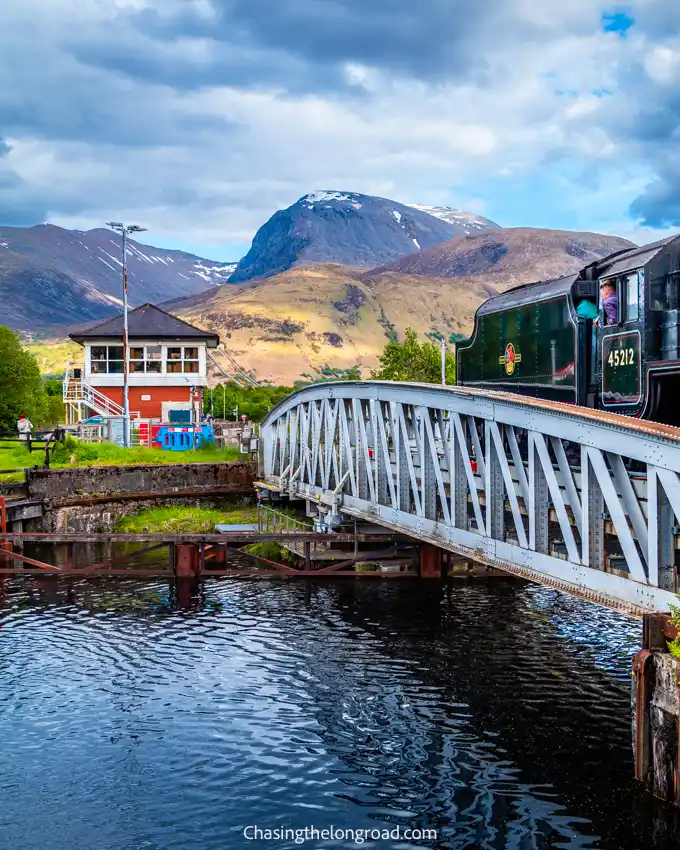

The train passes over the iconic Glenfinnan Viaduct on its way to the coastal town of Mallaig. The 21-arched viaduct is extremely photogenic.
Also, it is one of the best tourist attractions in Scotland. So you can take a short day trip from Fort William to visit this historical viaduct.
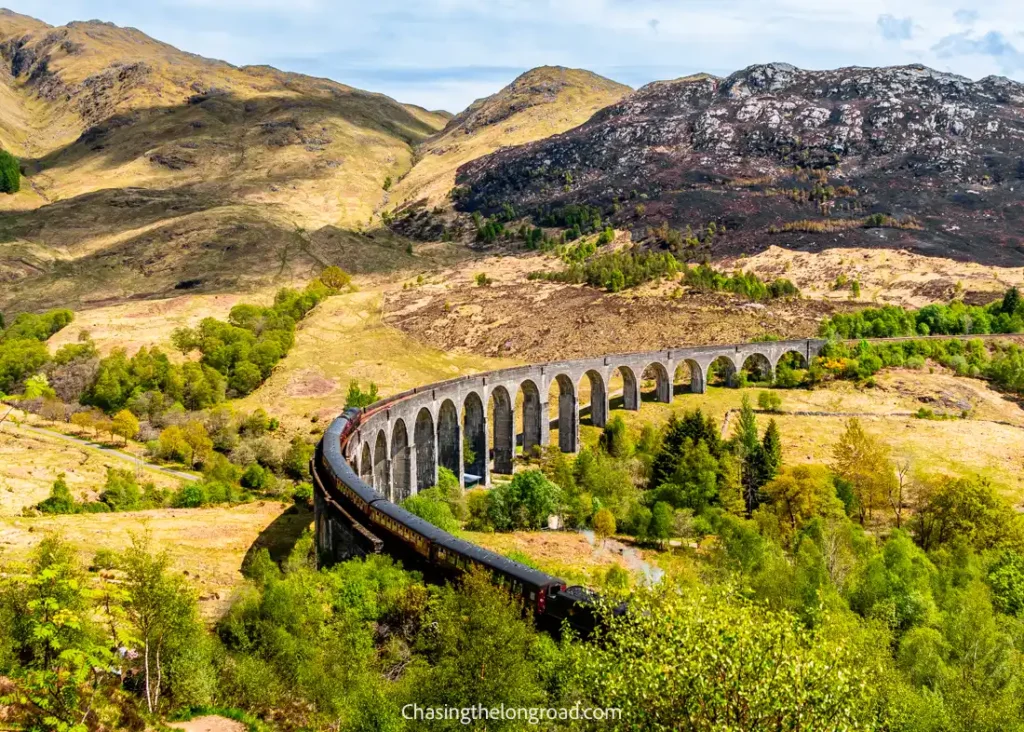
The Jacobite Steam Train runs daily between April and October. It gets super busy in the summer. So, book your tickets well in advance.
2. Test Your Limits and Climb Ben Nevis
Located at the western end of the Grampian Mountain range of the Scottish Highlands, Ben Nevis is the highest mountain in the UK. Towering over Fort William, this iconic mountain is a landmark of Scotland.
In Scottish Gaelic, Ben Nevis means- ‘mountain with its head in the clouds’, which happens very often, literally.
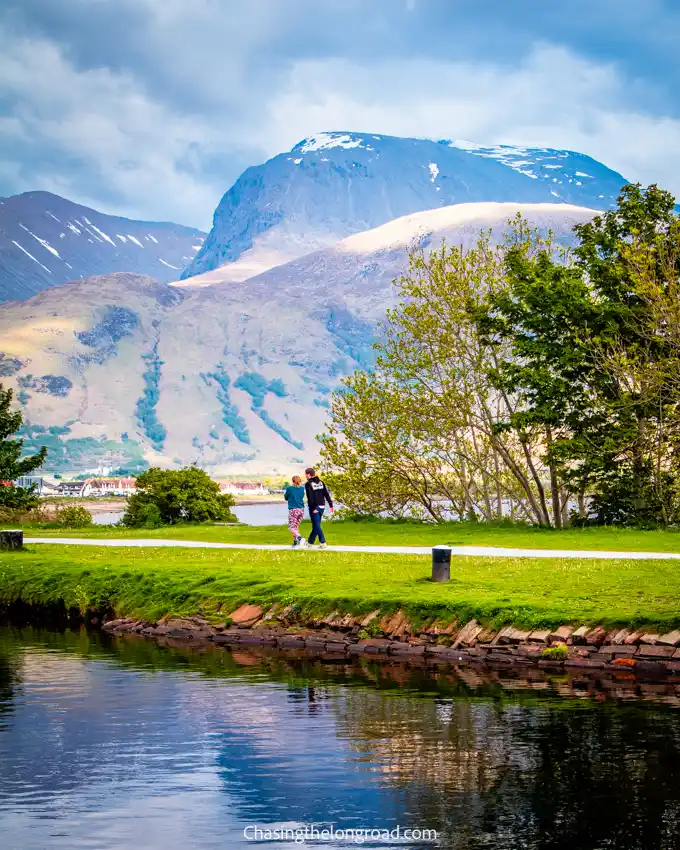

Climbing the mighty Ben Nevis is on the bucket list of many adventure lovers and one of the main reasons to visit Fort William.
There are two main walking routes to Ben Nevis. The popular one is the Mountain Track, used by most walkers. The Carn Mor Dearg Arête route is for more experienced climbers.
The area near the summit is very rocky and is often covered by snow. At the summit, you will find the remains of the abandoned meteorological observatory.
3. Explore Nevis Range Mountain Resort
Sitting right next to Ben Nevis, the Nevis Range Mountain Experience is one of the unmissable tourist attractions in Fort William.
Home to a wide range of outdoor activities, it is built on the north face of Aonach Mòr, the 8th highest mountain in Britain.
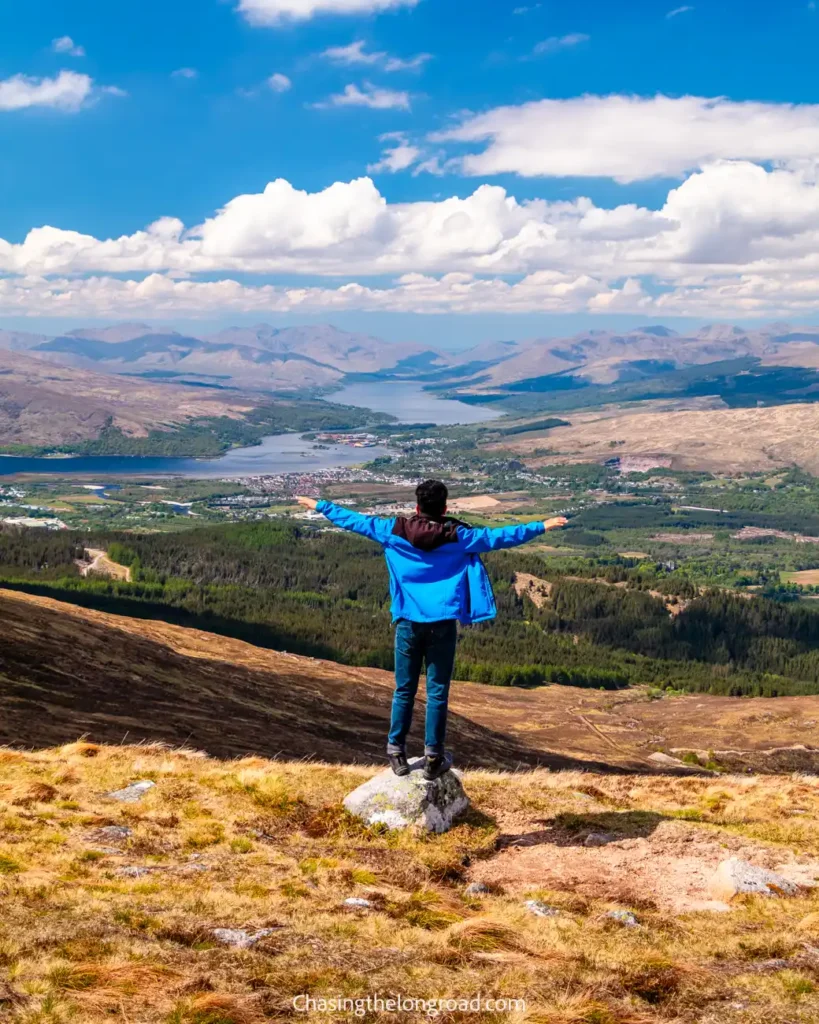
Nevis Range Mountain Gondola is the UK’s only mountain gondola. It transports visitors to an elevation of 650m in just around 12-15 minutes.
At the top, you will be greeted with some of the most stunning views over Fort William, Loch Linnhe, Loch Eil and the Great Glen. On clear days, you can even see the Inner Hebrides.
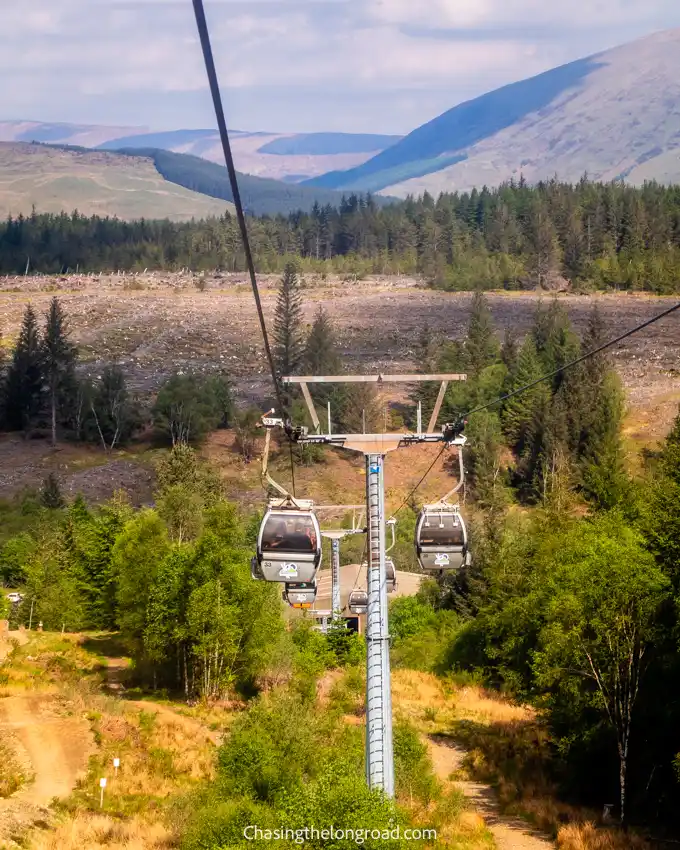

Take a short hike to two popular viewpoints – Sgùrr Finnisg-aig and Meall Beag. The path is well-maintained and clearly waymarked.
Nevis Range has been hosting the UCI Mountain Bike World Cup, which attracts thousands of sports lovers to this pretty town.
4. Enjoy Leisurely Strolls in Glencoe village
Situated at the northwest edge of Glen Coe, the famous valley in the Highlands, Glencoe is one of the most picturesque villages in Scotland and one of the must-visit places near Fort William.
Stroll around this quiet village. Visit the Massacre of Glencoe Monument, a memorial erected to commemorate the infamous Massacre of Glencoe that took place in 1692.
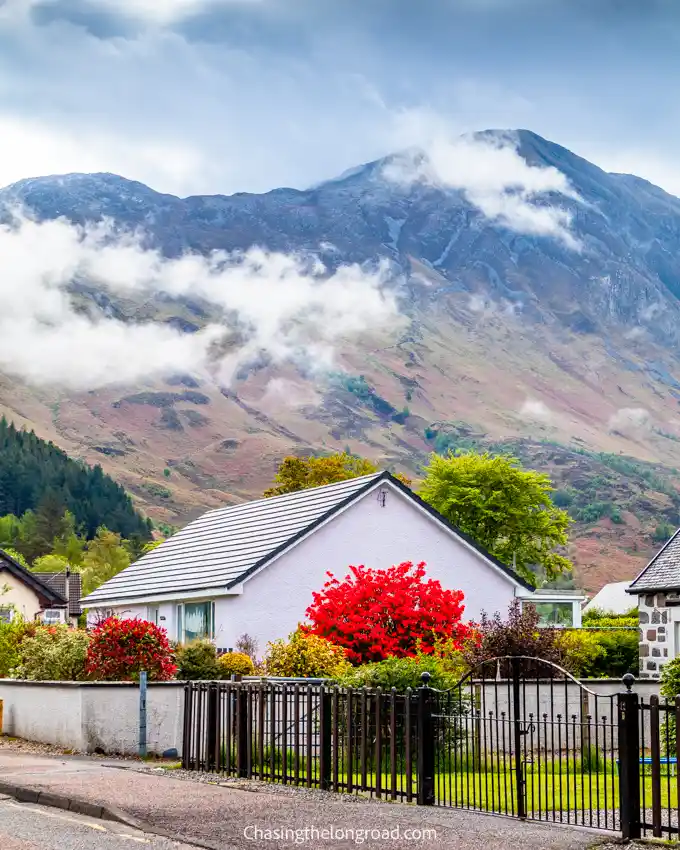

Also, pay a wee visit to the Glencoe Folk Museum to learn some local history.
Take a short hike around the tranquil Glencoe Lochan. It is one of the best family-friendly walks near Fort William.
If you are an expert hiker, climb up the Pap of Glencoe, which looms over this village. This 742-metre-high mountain has a strikingly conical shape.
Also, Glencoe has a rich wildlife. Keep your eyes peeled out for red deer and golden eagles.
5. Admire the picturesque views from the Old Boat of Caol
Resting on the shore of Loch Linnhe in Corpach near Fort William, the Old Boat of Caol boasts one of the most picturesque views of the Scottish Highlands.
The Corpach Shipwreck is a former fishing boat known as MV Dayspring. After a fierce storm in 2011, it landed on this beach.
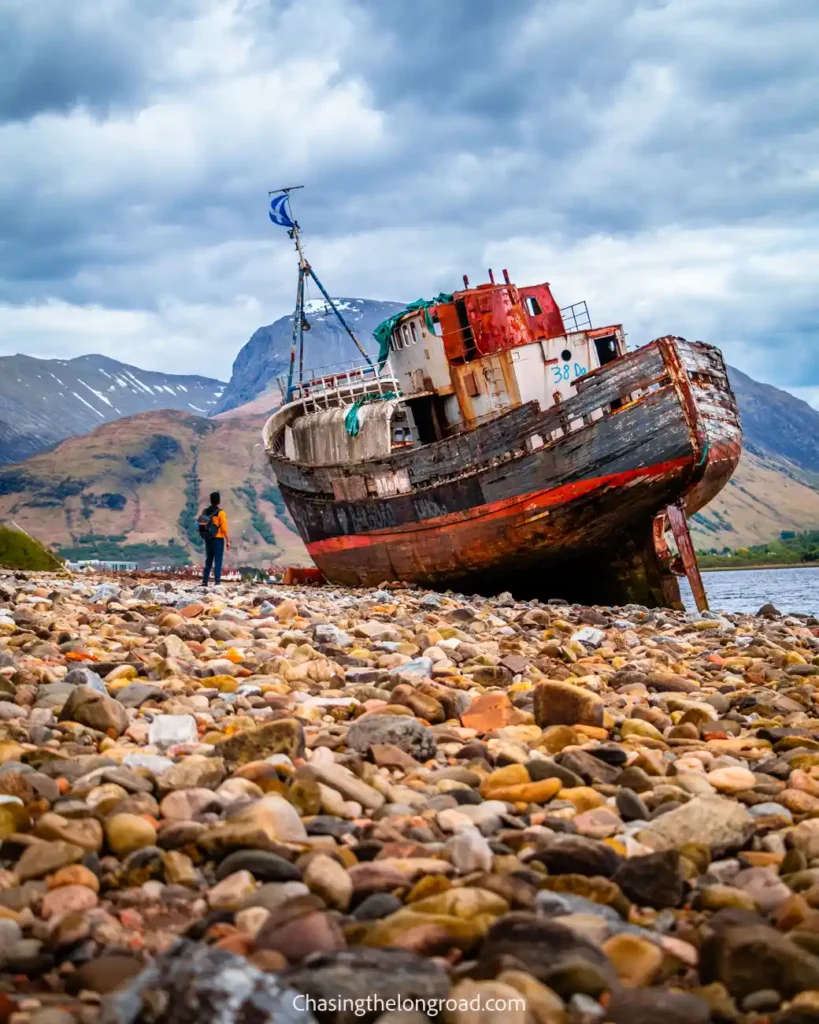
Its dreamy setting against the backdrop of the majestic peak of Ben Nevis attracts photographers from all around the world. Also, you will get a stunning view of Fort William and surrounding landscapes.
While you are here, ramble around the small port of Corpach. This area is steeped in history. It is the southern entrance of the Caledonian Canal.
Budding geologists would love to visit the nearby Treasures of the Earth, a museum showcasing gemstones and fossils.
6. Walk through Neptune’s Staircase
Located in the scenic village of Banavie, the historic Neptune’s Staircase is a must-see visitor attraction near Fort William.
Thomas Telford, the renowned Scottish civil engineer, built this staircase lock on the Caledonian Canal between 1803 and 1822.
It is the longest staircase lock in Britain and spans over a quarter-mile in length, consisting of eight locks. It takes around 90 minutes for a boat to rise to a height of 64 feet.
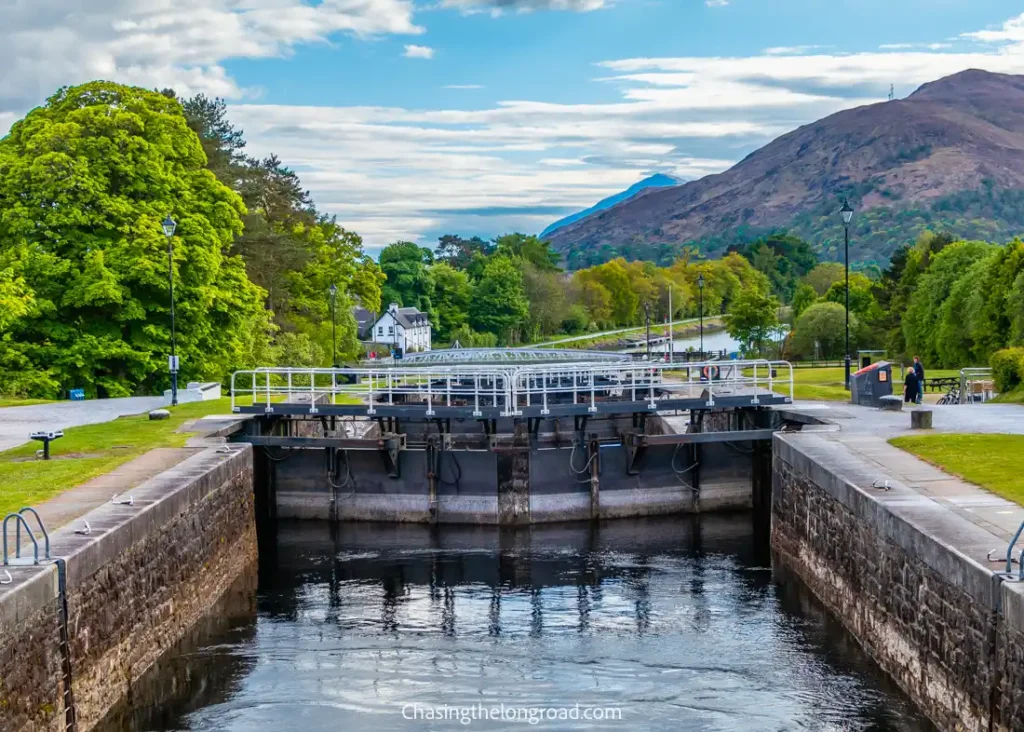
You can catch local bus services from Fort William town centre to reach here.
From the top of Neptune’s Staircase, admire the lovely view over to Loch Linnhe and the northwest side of Ben Nevis.
Also, you can walk along the canal and watch the boats navigate through the locks. The famous Jacobite Steam Train passes through Banavie train station.
7. Take a tour of Ben Nevis Distillery
After a busy day exploring outdoors, why not treat yourself to a dram of Ben Nevis Whisky?
Located on the outskirts of Fort William in the shadow of the mighty Ben Nevis, Ben Nevis Distillery is one of the oldest whisky distilleries in Scotland.
Founded in 1825 by ‘Long John’ McDonald, this 200-year-old seaside distillery uses water from the nearby river stream, Allt a’Mhuilinn.
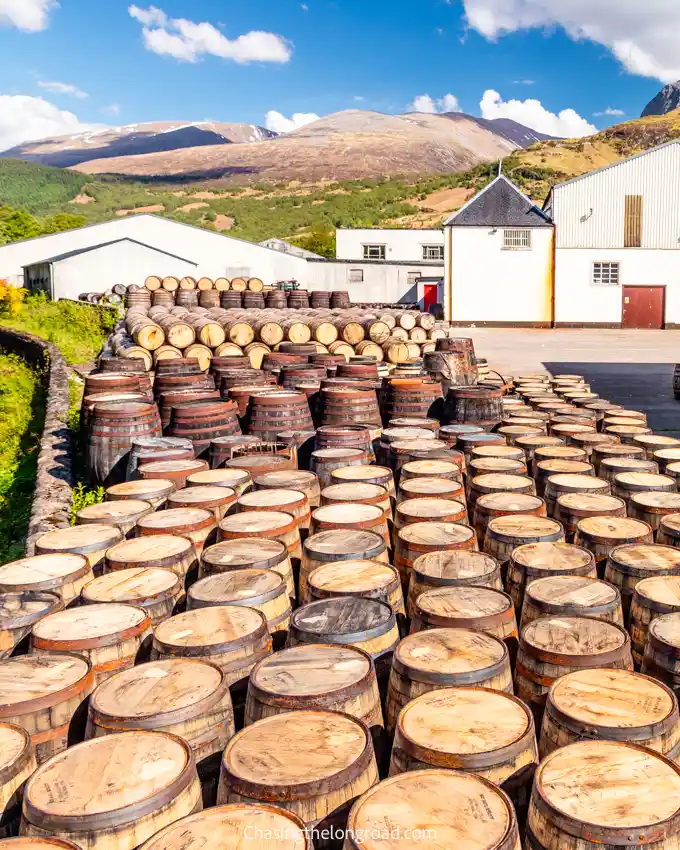

It takes only five minutes to drive here from Fort William town centre.
Hourly tours run every day from June to August and on weekdays for the rest of the year. Take a guided tour to learn about the history of this distillery.
You will also get to visit the production areas inside. It finishes off with a complimentary tasting of their Whisky.
8. Visit West Highland Museum
Founded in 1922 by a group of Lochaber locals, West Highland Museum is one of the oldest museums in Scottish Highland.
Located at the heart of Fort William, this museum has a great collection of artefacts related to archaeology and wildlife.
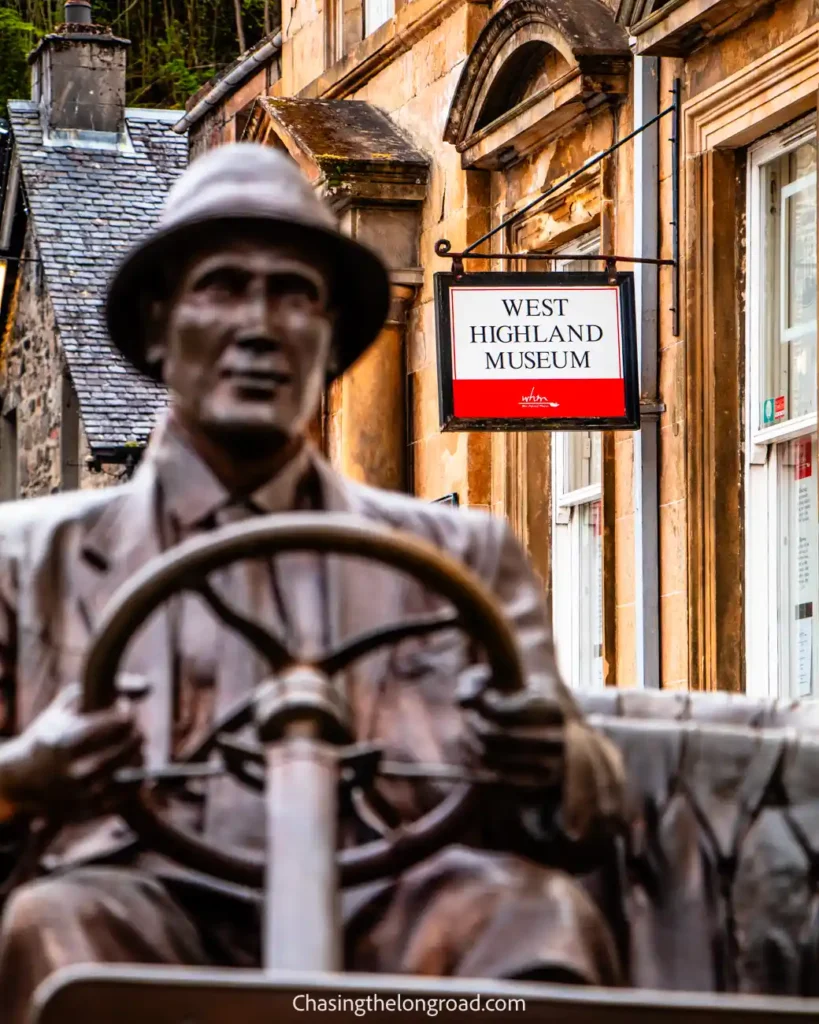
The main collections include an embroidered waistcoat of Bonnie Prince Charlie, a Governor’s room with a birching table, bagpipes played at the Battle of Bannockburn, a Holyrood ball fan – given out by the prince to the ladies who attended the ball at Holyrood Palace in 1745.
It also showcases the local history of Fort William and the surrounding area.
This museum is open throughout the year, and entry is free.
Don’t miss the bronze cast of a Ford Model T with a man in Cameron Square adjacent to this museum.
9. Unleash your inner explorer at Steall Waterfall
Tucked away in the rugged Glen Nevis, Steall Waterfall is one of the best places for a short hike around Fort William. This gorgeous waterfall has appeared in the Harry Potter films.
Steall Waterfall is the second-highest waterfall in Scotland. It tumbles down into the Nevis Gorge with a single drop of 120 metres.
To reach the starting point of this walk, you will have to drive for around 18 minutes from Fort William.
From the car park at the end of the road near the head of Glen Nevis, continue through a narrow gorge. It can be a bit rough and rocky in some places. Soon, you will see the enchanting Steall Waterfall.
You will need to cross a three-wire rope bridge to get to the base of the waterfall.
10. Take on adventures aplenty in Fort William
From mountain biking to skiing, hill walking to golfing, there is a wide range of outdoor activities to do in this town. It is heaven for adventure enthusiasts.
There are numerous hiking trails around this area. If you are looking for long-distance walking trails, you would be interested in West Highland Way and Great Glen Way.
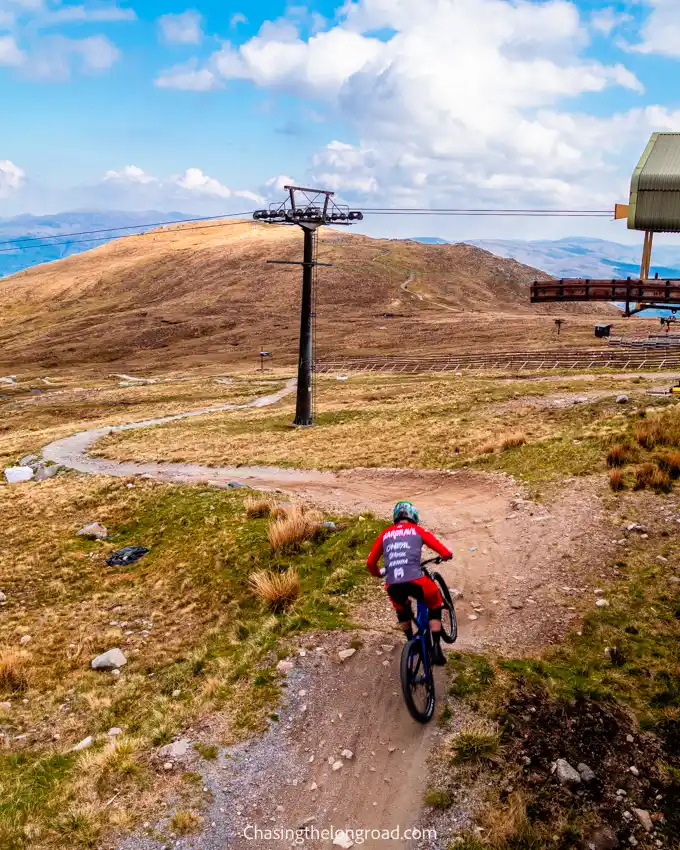

For water sports enthusiasts, there is a 60-mile canoe trail along the Caledonian Canal, which runs coast-to-coast from Corpach to Inverness. You can also do whitewater rafting on the River Gary near Fort William.
Nevis Range Mountain Resort is a popular place for mountain biking, skiing and paragliding.
If you are into ice climbing, head to the Ice Factor at Kinlochleven.
11. Discover the ruin of Old Inverlochy Castle
Nestled on the shore of River Lochy in Fort William, Old Inverlochy Castle is a ruined castle. It was built in the late 13th century by John Comyn II – the Chief of the Clan Comyn of Badenoch.
In the Battle of Bannockburn, the Comyns took sides with the English, and after their defeat, they lost their lands and ownership of the castle. Over centuries, it changed hands a few times.
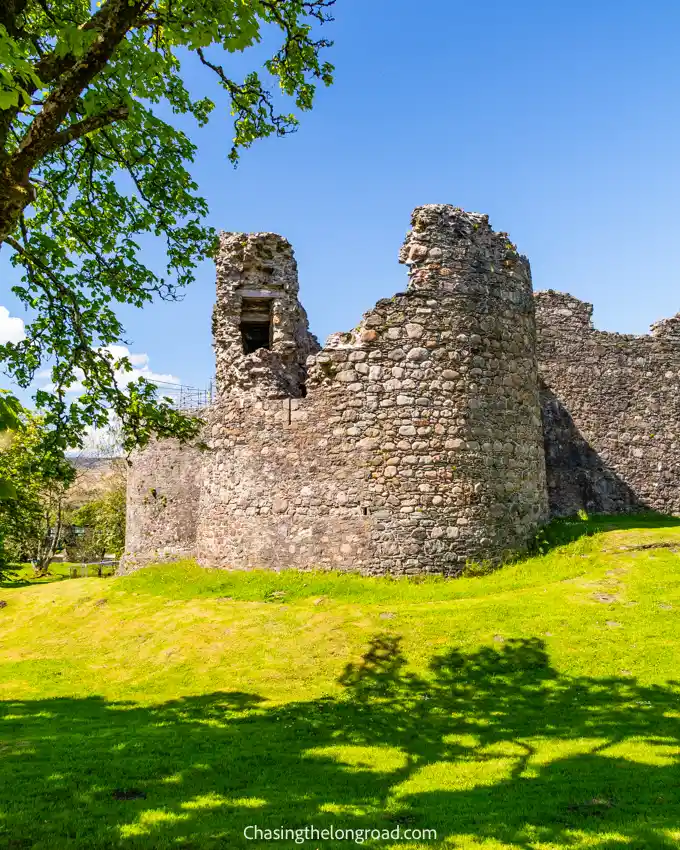

From Fort William town centre, follow the riverside path to reach Old Inverlochy Castle.
The castle ground by the river is a great spot to sit back and relax. You will get a stunning view of the surrounding mountains and the river from the footbridge over River Lochy.
While you are in this area, visit the nearby Highland Soap Company Visitor Centre and Ben Nevis Distillery.
12. Enjoy Endless Vistas from The Road to the Isles
Stretching from Fort William to the quaint seaside port of Mallaig, The Road to the Isles is one of the most scenic drives in Scotland. The ferry to the magical Isle of Skye leaves from Mallaig.
Along this route, you will come across some of the jaw-dropping sceneries of the west coast.
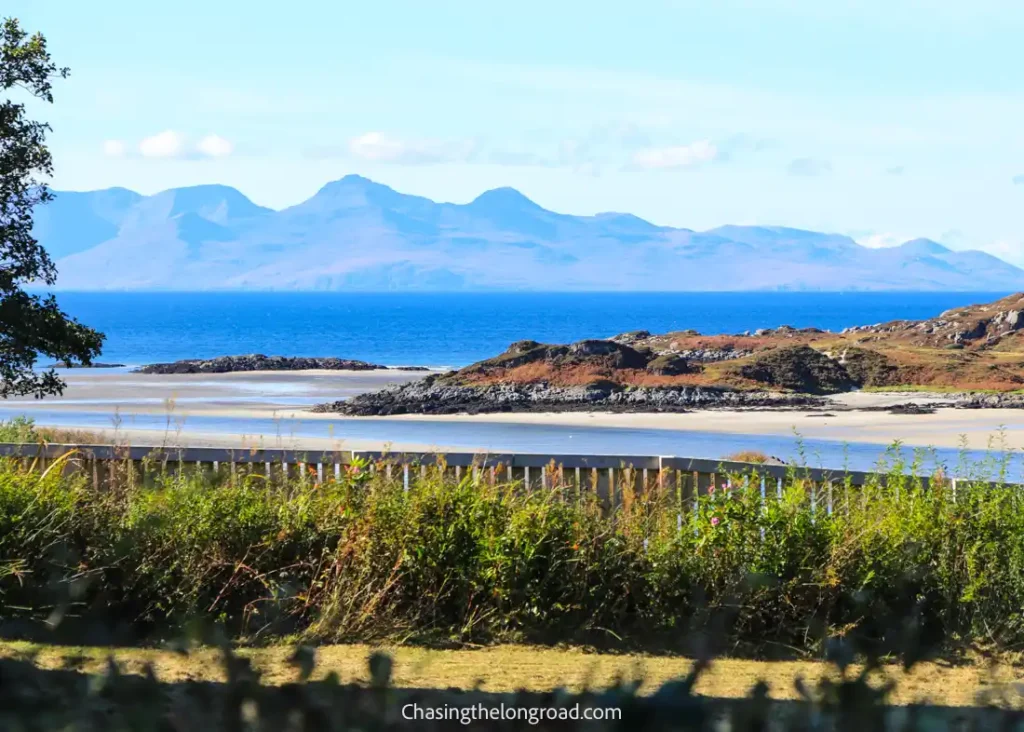
Make sure to visit the historic Glenfinnan Viaduct near the serene Loch Shiel and the pristine white beaches of Morar and Arisaig.
The drive from Arisaig to Mallaig is perhaps the most spectacular section of this route. On clear days, you would get a gorgeous view of the mountain ranges of Skye and the Small Isles in the Inner Hebrides.
Moreover, there is Loch Morar – the deepest freshwater lake in the UK.
13. Stroll around the Fort William Town Centre
Fort William’s High Street is lined with various shops, pubs, cafes and restaurants.
If you are looking for a cosy cafe, we would highly recommend a visit to the Rain Bakery. This little coffee shop has a great selection of pastries and cakes. Try their Turkish eggs and pancakes for breakfast.
For vegans, The Wildcat is a great choice. They serve delicious breakfast and lunch from fresh local produce.
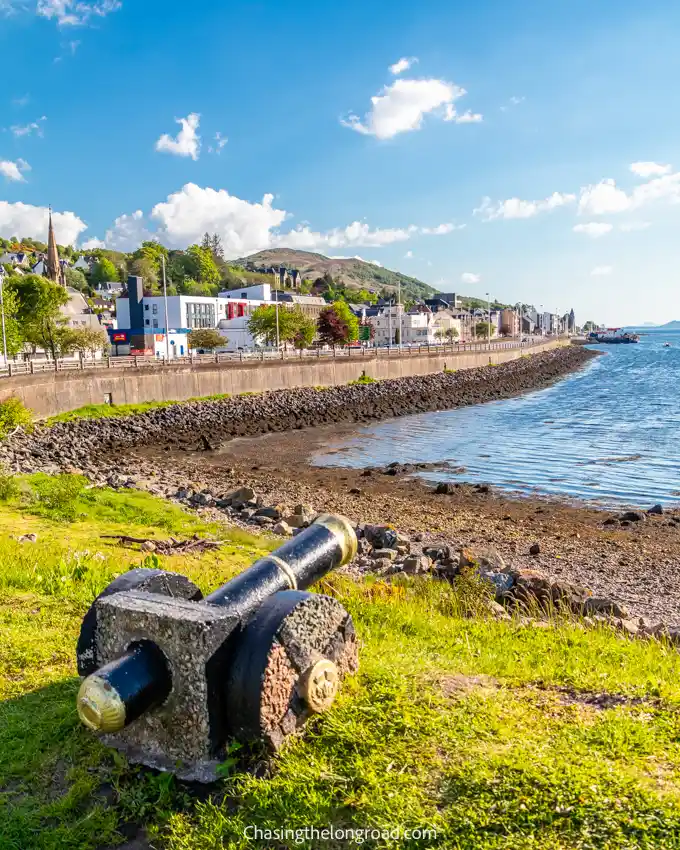

Book lovers can easily spend a few hours browsing through the eclectic collection of maps, travel guides and second-hand books at The Highland Bookshop.
Ramble around the Old Fort of Fort William. The town got its name from this historic ruin. It was built by Oliver Cromwell in 1654.
Pop into the nearby Lochaber Geopark Visitor Centre. You would get to learn a lot of information about the geology and landscape of the Lochaber area.
14. Hike around Cow Hill
If you are looking for some easy family-friendly walking trails in Fort William, then this hike to Cow Hill is perfect for you.
Cow Hill is a small hill that blocks the view of Scotland’s highest peak, Ben Nevis, from the town. It is only 287 metres tall.
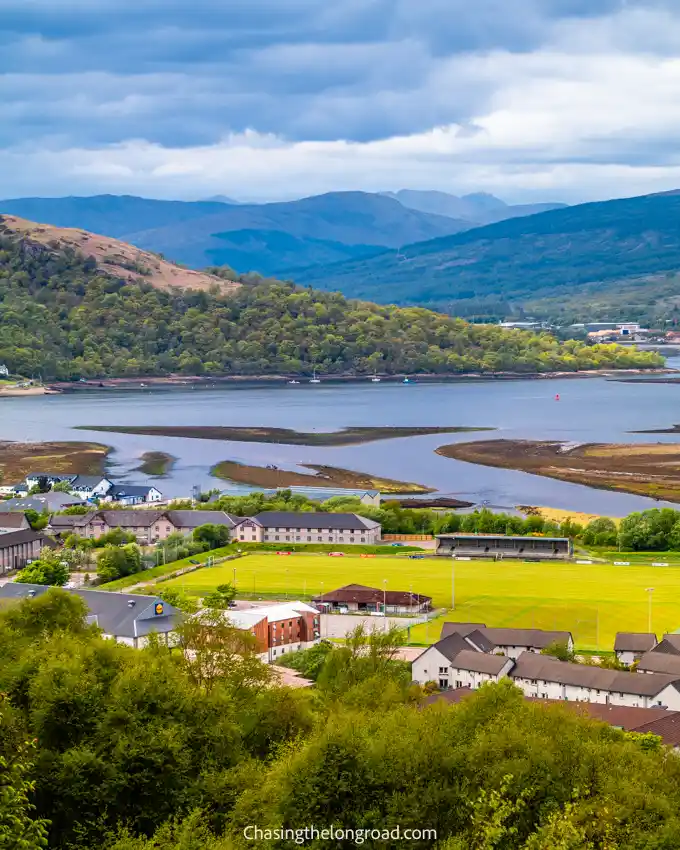

The hike starts from Lochaber Leisure Centre. The entire circuit takes around 3-4 hours to complete and covers a distance of around 6.75 miles.
Paths are way-marketed and easy to follow. Also, the breathtaking elevated view over Loch Linnhe, Loch Eil, Glen Nevis and Fort William is simply breathtaking.
During the Jacobite uprising of 1745, cannonballs were fired from the Sugar Loaf Hill viewpoint.
15. Walk the West Highland Way
Walking a section or full stretch of West Highland Way should be on your Fort William itinerary. It is very popular among locals and tourists alike.
You would be rewarded with some stunning sceneries of the West Highlands – a vast stretch of Loch Lomond and the Trossachs, desolate Rannoch Moor, undulating terrain of Glen Coe and many more.
Opened in 1980, West Highland Way is a long-distance route running from Milngavie near Glasgow to Fort William. Spanning a stretch of 96 miles, it’s the first official long-distance walking trail in Scotland.
The good thing about West Highland Way is it’s not a very difficult walk and doesn’t involve climbing any big hill.
There are plenty of accommodations in the towns and villages along this way. Also, you can do wild camping here.
16. Take a Scenic Cruise on Loch Linnhe
What better way to admire the stunning surrounding area of Fort William than a boat tour over Loch Linnhe?
There are several different boat trip options available. Boats sail from the pier. Sit back and enjoy the breathtaking view in all directions.
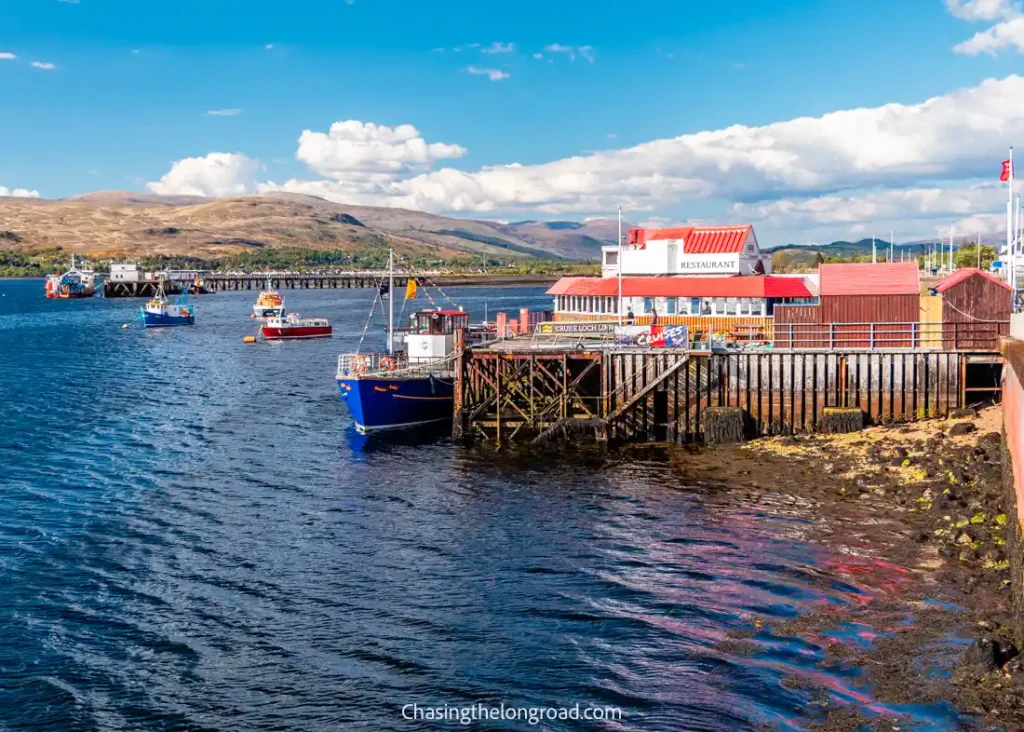
You will learn about the history of this area from a knowledgeable guide.
The majestic Ben Nevis dominates the skyline. You will be sailing through the tranquil Loch Linnhe and Loch Eil.
This area has a rich wildlife. If you are lucky, you might spot seals, otters, porpoises and salmon playing in the loch. You could even spot Golden Eagles flying above.
17. Take in Breathtaking Views from the Great Glen Way
The Great Glen Way is a popular long-distance route from Fort William to Inverness. Opened in 2002, this 78-mile path is one of the great trails of Scotland.
It generally takes 5-6 days to hike and 2-3 days to cycle the entire Great Glen Way. The path is well-signposted. It is perfect for beginners and experienced walkers and cyclists visiting Fort William.
Most of the walk is at a low level along the towpaths of the Caledonian Canal and woodlands. The entire route can broken down into six different stages.
Not only you would get to enjoy stunning sceneries, but Great Glen Way also has excellent wildlife. Keep your eyes peeled out for golden eagles, deer, and red kites.
18. Seek out inspiring views from the Commando memorial
Located about 10 miles northeast of Fort William, the Commando Memorial is one of the most scenic monuments in the UK dedicated to War heroes.
The bronze statues of three Commandos commemorate the British soldiers who lost their lives in World War II.
From here, you will get a stunning view of Ben Nevis and the surrounding mountain ranges of Scottish Highlands. Certainly, it is a must-see spot on your way in or out of Fort William.
This 17-foot tall monument overlooks the former Commando Training Depot, a military training facility in Achnacarry Castle. During the Second World War, about 25,000 soldiers were trained here.
Map of the Tourist Attractions in Fort William
Here is a map of all the tourist attractions mentioned in this travel guide. Click on the link to open it in Google Maps. You can save it for future use. We have also marked a few of our favourite cafes and restaurants in this town that you might like.
Best Time to Visit Fort William
May to September is the ideal time to visit this lochside town.
During these months, days are longer and drier, with lots of sunshine. It is the perfect time for outdoor activities. Also, the famous Jacobite Steam Train runs from the end of March to October.
Summer is also the busiest tourist season. That means hotels will be booked out well in advance, and restaurants will be very busy.
The weather in Fort William, like the rest of Scotland, is extremely unpredictable. So, check the weather before going out exploring.
Also, it is a good idea to carry waterproof jackets with you. Even in summer, you might see some rain.
How long to spend in Fort William
We would recommend spending at least 2-3 days in this town. Although this town is quite small, there are loads to see here.
Fort William is a perfect hub to explore the Lochaber area of the Scottish Highlands. There are so many incredible hiking trails nearby. You could easily spend a week here.
This town is only an hour’s drive from Oban, the seafood capital of Scotland. It takes only 1 hour and 45 minutes to drive to Inverness from here. Also, many visitors catch the ferry to the Isle of Skye from Mallaig.
How to Reach Fort William
This town is well connected with the major towns and cities of Scotland. You can easily reach here using public transport.
By Car – The drive to Fort William is one of the most scenic road trips in Scotland. From Glasgow, it takes around 2 hours and 30 minutes. On the way, you can visit Loch Lomond, Glen Coe, Spean Bridge, Stirling and Falls Of Falloch. It takes about 3 hours from Edinburgh.
By Bus – Catch a Citylink bus from Glasgow Buchanan Bus Station. The journey to Fort William takes approximately 3 hours and 10 minutes. Book your ticket in advance to get a reduced fare. Usually, four bus services run on this route every day all year round.
By Train – The journey from Glasgow Queen Street Train Station to Fort William is very scenic and takes around 3 hours and 45 minutes.
If you are coming from London, board the Caledonian Sleeper train from London Euston. It leaves London at night and reaches this town the next morning.
How to get around Fort William
The town centre is pretty compact and easily walkable. The bus and train stations are centrally located.
Shiel Buses operate the local bus services around the town and the nearby Lochaber area.
Scottish Citylink runs the intercity buses connecting Fort William to Oban, Inverness, Isle of Skye and Glasgow. They stop at some nearby places.
Also, Scotrail runs regular train services from Mallaig and Glasgow. Trains run on time and are a cost-effective way to travel.
But a self-driving car is the best option to get around Fort William. It will give you more flexibility and save you time to explore all the hidden corners.
We hope you have a great time exploring this small town.
Love, Moumita & Sankha.
Hello,
I just wanted to say how useful this is and to say a massive thank you.
Warmest regards,
Julian